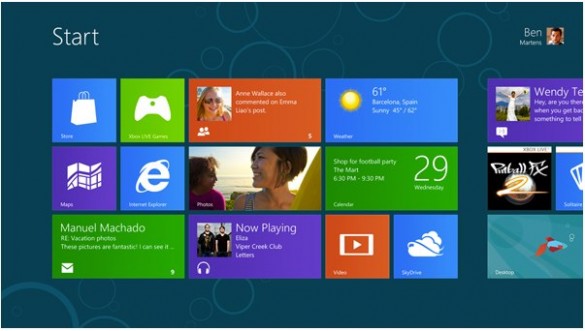Let’s get one thing straight from the beginning; I’m no Microsoft hater. I’ve designed networks around Windows for many years and happily supported them. I have many client companies going about their business with no Apple products or Linux boxes in sight.
But, I’m going to stick my neck out on one thing: I think a large number of businesses will completely ignore Windows 8.
Windows 8’s user experience represents the biggest change to how the operating system works since Windows 3.1 evolved to Windows 95. Ever since the first developer previews of Windows 8 hit the scene, I’ve chatted to fellow-techies and canvassed their opinions on the new OS. Their views range from indifference, to total bafflement as to exactly what Microsoft is trying to achieve.
Here’s why I just cannot see my clients taking an interest in Windows 8.

1. Users don’t care
When an individual gets to the office, they don’t really care what their computer’s user interface looks like – they just want to get their work done without the machine slowing down or crashing.
If you want proof of this, just consider the fact that Computerworld recently reported that 41% of the world’s PCs still run Windows XP – which does everything any business needs it to do. Yet, I don’t hear users complaining that their machines are “out of date.”
2. Users don’t like change
I’ve recently migrated a number of user groups from XP to Windows 7. Sure, the users do become familiar with it quickly, but they don’t embrace changes and enjoy new features in the way that computer enthusiasts do.
Remember that the fact you are reading this article places you in the small percentage of the population interested enough in technology to visit an IT website. Many corporate computer users are still getting their heads around copy and paste.
3. Businesses have no intention of buying touch screens
None of my clients will be easily persuaded to buy touch screens, just because they allow Microsoft to do things in a more “modern” (or more iPad-like) way.
Businesses spend money to do new things, or so they can do existing things better (or more quickly). They don’t spend money just to do things differently.
4. Windows 8 doesn’t know what it wants to be
Is it a tablet operating system, a touch operating system or a desktop operating system? To me, and to many of my associates, it’s trying to be all the above and not succeeding particularly well at any of them.
The way that, in its default state, Windows 8 keeps flicking between the tiled Metro view and the traditional Windows desktop is strange and illogical. If it stresses me out as a techie with Microsoft certification, I know what the users are likely to think.
Sure, there are already plenty of published ways to disable Metro – but if you’re going buy Windows 8 only to turn it back into Windows 7, then what’s the point? Why not just accept that…
5. Windows 7 does it better
I’m sure there will be plenty of home users and enthusiasts with touchscreen PCs who’ll grow to love Windows 8. Business users, however? I just can’t see it. With years to go before support for Windows 7 is withdrawn, consultants like me will edge them towards safety and supportability.
And what happens then? It’s quite simple. Windows 7 becomes the new XP, and Windows 8 becomes the new Vista.

Leave a Reply
You must be logged in to post a comment.